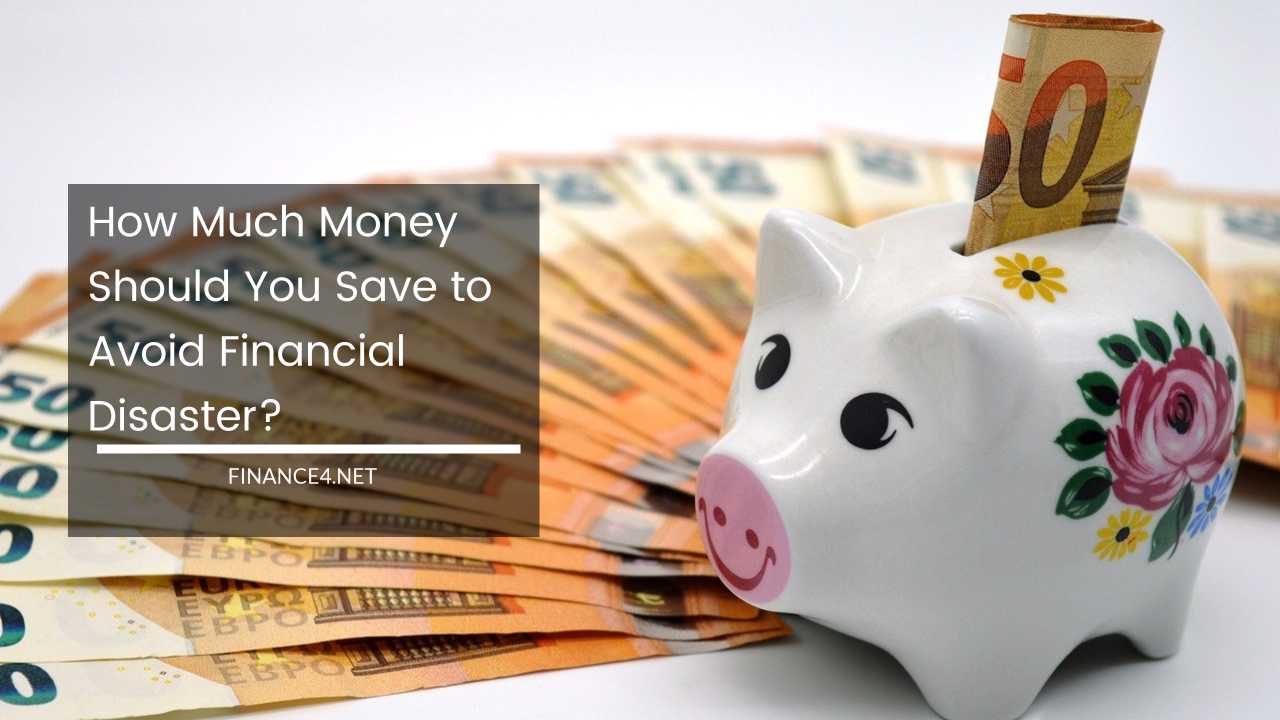How Much Money Should You Save to Avoid Financial Disaster?

How Much Money Should You Save to Avoid Financial Disaster? Building Your Financial Fortress
Life throws curveballs. From unexpected medical bills to appliance breakdowns, emergencies can wreak havoc on your finances. But what if you had a financial buffer, a safety net to catch you before you fall? This is where the emergency fund comes in.
This comprehensive guide dives into the world of emergency savings, exploring how much you should save to avoid financial disaster and the steps to build your financial fortress.
Why is an Emergency Fund Important?
Imagine this: you lose your job, your car needs a major repair, or your child requires emergency medical attention. Without an emergency fund, these situations can quickly spiral into debt, jeopardizing your future financial stability.
An emergency fund acts as a financial shock absorber, providing peace of mind and the resources to weather unexpected storms. Here’s why it’s crucial:
- Covers Unexpected Expenses: Emergencies can be expensive. An emergency fund helps cover medical bills, car repairs, sudden home maintenance needs, or even natural disasters without resorting to high-interest credit cards.
- Reduces Stress: Financial worries are a major source of stress. Having an emergency savings plan can significantly alleviate anxiety and allow you to focus on resolving the situation at hand, freeing up mental space to make sound decisions.
- Protects Your Credit Score: When emergencies hit, you won’t be forced to rely on credit cards, which can damage your credit score due to high utilization and potential late payments. This can have a negative impact on your ability to secure loans for major purchases like a car or a house down the line.
- Provides Time: An emergency fund buys you valuable time. It allows you to find a new job, explore alternative solutions, or make informed financial decisions during a crisis, without the pressure of immediate financial burdens. This can lead to better outcomes in the long run.
How Much Should You Save? It Depends on Your Unique Situation
There’s no magic number that fits everyone. The ideal emergency fund amount depends on several factors, including:
- Your Monthly Expenses: This is the foundation. Calculate your essential monthly costs like housing, food, utilities, transportation, and minimum debt payments. Be honest with yourself and factor in recurring costs like subscriptions or memberships.
- Dependents: Do you have children or other dependents? Factor in their needs when calculating your expenses. Consider potential future costs associated with childcare or education.
- Job Security: Those with steady jobs with a history of layoffs or furloughs may feel comfortable with a smaller emergency fund compared to someone with a less stable income source like freelance work or commission-based sales.
- Debt: High debt payments can strain your cash flow. Aim for a larger emergency fund if you have significant debt obligations, especially high-interest debt. An emergency can derail your debt repayment plans, so having a buffer can help you stay on track.
- Lifestyle: Consider your spending habits. Factor in additional costs associated with hobbies or extracurricular activities. Do you travel frequently? These factors can influence your baseline monthly expenses.
The 3-to-6 Month Rule: A Popular Guideline, But Not a Rigid Rule
A widely recommended starting point is to save 3-6 months’ worth of your essential living expenses. This provides a cushion for most unexpected situations.
Here’s how to determine your target amount:
- Track Your Expenses: For a month, meticulously track all your essential expenses (housing, food, utilities, transportation, minimum debt payments). Don’t forget to include recurring costs like subscriptions or memberships.
- Calculate the Total: Add up your monthly essential expenses.
- Multiply by 3-6: Depending on your comfort level and circumstances, multiply the total by 3 or 6 to determine your emergency fund target.
Example: Let’s say your essential monthly expenses total Rs. 50,000. Following the 3-month rule, you’d aim to save Rs. 150,000 (50,000 x 3). The 6-month target would be Rs. 300,000.
Beyond the Basics: Factors to Consider When Determining Your Ideal Emergency Fund Amount
While the 3-6 month rule is a good starting point, individual circumstances may necessitate adjustments:
- High Debt: If burdened by high-interest debt, prioritize paying it down while building a smaller emergency fund (3 months’ expenses). Once debt-free, focus on growing your emergency fund. This strategy allows you to address a pressing financial concern while still having a safety net for emergencies.
- Medical Concerns: If you or a family member has ongoing medical needs, consider a larger emergency fund to cover potential medical expenses that may not be fully covered by insurance. This could include deductibles, copays, or unexpected medical procedures.
- Self-Employed or Contract Work: If your income is less stable due to freelance work, commission-based sales, or being self-employed, aim for a larger emergency fund (6 months or more) to provide a more significant safety net during periods of lower income.
- Location: Cost of living varies greatly by region. If you live in a city with a high cost of living, you may need a larger emergency fund to cover unexpected expenses.
Saving Strategies to Build Your Emergency Fund
Building an emergency fund takes discipline and planning. Here are some practical tips to get you started:
- Automate Savings: Set up automatic transfers from your checking account to your savings account. This “pay yourself first” approach ensures consistent saving and removes the temptation to spend that money.
- Review Your Budget: Conduct a thorough budget review. Identify areas where you can cut back on discretionary spending and redirect those savings towards your emergency fund. This could include dining out less often, entertainment subscriptions, or unused gym memberships.
- Boost Your Income: Consider a side hustle or freelance work to generate extra income specifically for your emergency fund. The gig economy offers many opportunities to monetize your skills and hobbies.
- Set Realistic Goals: Break down your target amount into smaller, achievable goals. For example, if your target is Rs. 300,000, aim to save Rs. 25,000 per month. Reaching smaller milestones will keep you motivated and on track.
- Keep it Accessible: Store your emergency fund in a liquid, easily accessible savings account. While a high-yield savings account might be tempting, prioritize easy access over a slightly higher interest rate. You’ll need this money readily available during an emergency.
Beyond Savings: Additional Strategies to Bolster Your Financial Security
Building an emergency fund is a crucial step towards financial security, but it’s not the only piece of the puzzle. Here are some additional strategies to consider:
- Reduce Debt: High-interest debt can significantly strain your finances. Focus on paying down credit card debt and other high-interest loans to free up more cash flow and reduce your overall financial vulnerability.
- Increase Your Income: Explore ways to increase your income-earning potential. This could involve asking for a raise, taking on a side hustle, or pursuing additional skills or certifications that can make you more valuable in the job market.
- Build Multiple Income Streams: Diversifying your income sources can make you more resilient to financial shocks. Consider rental properties, royalties from creative work, or passive income investments for the long term.
- Have Proper Insurance: Adequate health insurance, disability insurance, and homeowners or renters insurance can protect you from significant financial losses in case of unexpected events.
Final Thoughts: Building Your Financial Fortress, Brick by Brick
An emergency fund is your financial fortress, a safety net that protects you from life’s curveballs. By following the strategies outlined above, you can build a secure financial foundation and face the future with greater confidence.
Remember, financial security is a journey, not a destination. Start small, stay committed, and gradually build your emergency fund. Every rupee saved brings you closer to financial peace of mind.



